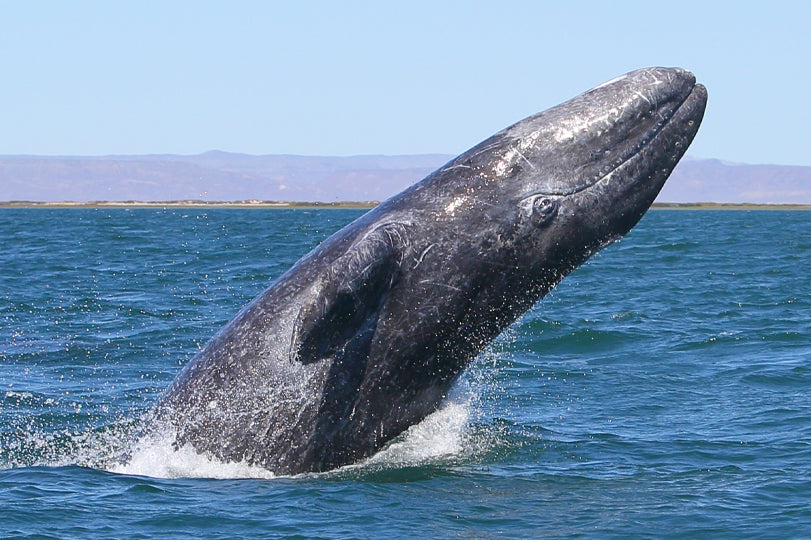Grey whale image; Credit: © Shutterstock
As the ice clears in the Pacific Arctic and sea ice becomes an endangered species itself, the warming process clears territory for the 5 species of baleen whale that occur there, in the Chukchi Sea. Humpback, fin and minke are recovering slowly from their awful demise during the 19th and 20th centuries and migrate there. The residents are the grey whale at times and the endemic bowhead, which seems to be doing very well thank you, as these whales look in particularly fine condition.
75% of the sea ice volume has been lost so far, while Pacific waters flow northward more readily now than they did. Sue E. Moore of NOAA Fisheries Division in Seattle, US wrote about these and other effects on these species in the Biology Letters of the Royal Society under the l title Is it ‘boom times’ for baleen whales in the Pacific Arctic region?
You can read the paper at their site here.
The calls of whales give an excellent guide as to distribution. When humpbacks and fins stop their calling in early November now (much later than previously), the bowheads have usually begun calling in the same area of the southern Chukchi Sea. The supply of food for their vast appetites is crucial and Sue thinks that the mesozooplankton populations should be increased with the northern flow of Pacific water from the Bering Sea. Upwelling events have increased over the last 25 years, even creating concentrations of the zooplankton which are much are appreciated by the bowheads. Large copepods and euphausiids (basically, krill) have been observed in the nutrient rich waters since 2003, while humpback, fine and minke whales will also feed on the fish that forage the plankton.
Bowhead whales benefit especially in the winter, then migrate to the Beaufort and Chukchi Seas in the spring, while greys reach the northern Bering Sea in spring. The grey whale has coarser, shorter baleen for sorting prey from sucked-up sediments. They migrate south in the Autumn, while the humpback, minke and fins all occupy the southern Chukchi from August through till October. They have throat pleats to help with gulping down the larger prey such as fish. All enjoy the krill, however, whose abundance has always been associated with whales feeding grounds.
It is boom time
at the moment, with competition between bowhead and fin possible, and specific indications of marine ecosystem health available from the whales themselves. The cetaceans are ecosystem engineers and may buffer the system from change, so it is appropriate that they must be the largest, indicator organisms
that we have. Strategic information on the effects of increased shipping, oil and gas installation should now be gathered, along with the crucial comparison of Pacific with other Arctic regions, all helping to assess how marine mammals can show us some favourable effects of global warming, while their terrestrial cousins have been suffering badly from the loss of their habitat - the sea ice.
More of our prolific writing on all the whale species here!










